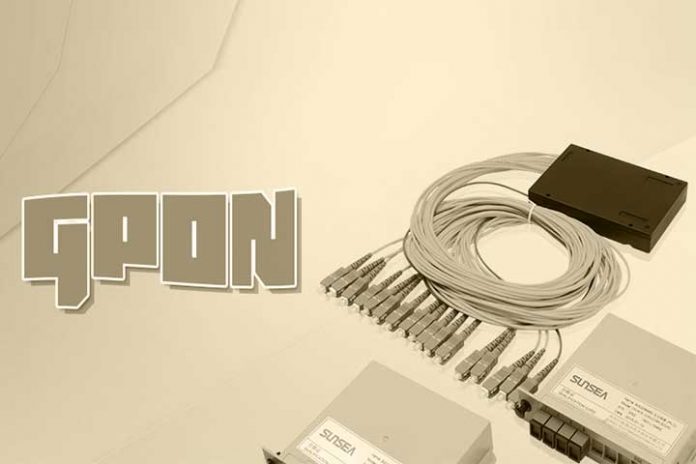GPON (Gigabit Capable Passive Optical Network) is a telecommunications access technology standard that uses the same fibre optic installation to operate and provide high-speed voice, data and TV services, with speeds greater than 1GBps.
GPON replaces the conventional 3-tier Ethernet design with a 2-tier optical network by removing access and distribution Ethernet switches using passive optical devices.
Before the GPON networks appeared, the normal thing was to carry out an installation for each type of service: TV, through an installation with coaxial cable, Telephony through telephone pairs, Internet through telephone pair and twisted pairs, etc.
This accumulation of parallel installations had major drawbacks:
- Technically speaking, it is a complex communication system so that it can cause failures, complex installation and operating problems
- It is necessary to have a huge space to place the channelling for each service
- Very high cost due to technical complexity and labour
- The GPON standard avoids all these drawbacks and achieves higher transmission speeds since it works on fibre optics.
This technology has broken out to provide all kinds of data, voice, and TV services, through a much simpler, adaptable, and scalable system, at very high symmetrical speeds, at a distance of up to 20 km, and for a maximum of 64 users. Through fibre optics, that is, GPON networks, we can obtain high transmission and reception speeds of information, be it voice, data or video, simply with a connection and a fibre optic network.
GPON Technology Applications
GPON over fibre optics is already widely used and will be so in the future.
It has different applications:
- Transmission and communication through IP Telephony for companies and individuals, a service offered by Telecommunications Operators
- Wiring of all types of Buildings, Urbanizations and Hotels
- It is the most important and demanded technology in the hotel sector (FTTR, fibre to the room)
- It is becoming the telecommunications structure of Industry 4.0
- Due to all these applications and their advantages, the GPON network system over fibre optics is already the present and the future of the telecommunications installation because it provides a wide variety of services for the user, in a single network, at high speed and in a technically more straightforward fail-safe way.
Advantages of GPON Networks
The communication standard represented by GPON networks greatly simplifies and reduces the cost of the infrastructure of the telecommunications system. This is because all the elements that make up the connection between the transmitter ( OLT ) and the receiver ( ONT ) are passive; they do not need power from the electrical network to distribute the signal since it is done using optical splitters with a point-to-multipoint architecture, allowing Triple Play access (Video, Voice and Data).
This technology allows the transmission of all kinds of information, whether voice, data or video, without needing additional infrastructure.
It allows a link of up to 20 km between the transmitter and the receiver with practically no loss of information.
- Quality of Service: GPON has a Quality of Service model that guarantees the necessary bandwidth for each service and user.
- Security: fibre optics carries encrypted information, which guarantees security in communications.
- Scalability: Thanks to its very simple structure and operation, it allows high scalability over the same fibre infrastructure.
- Lower Consumption: The intermediate components of the GPON (optical fibre, splitters, distributors and connectors) are passive; that is, they do not need electrical consumption for their operation, which is currently more than an advantage.
GPON and the Hotel sector
Today GPON is the most used telecommunications infrastructure or hotel system, thanks to its simplicity and advantages.
GPON networks can be used and serve entire buildings, hotels, urbanizations, residences, etc., at a meagre cost compared to previous systems.
In the hotel sector, without a doubt, it has a more than practical application and has been a revolution since, as all the elements of the GPON network infrastructure are passive, with a single fibre cable per room, it can be provided with all customer services, reducing installation and maintenance costs, and providing all services in a single network: WiFi, VoIP, IPTV, etc.
The GPON communication standard, thanks to its optimization of resources and simplicity of operation, can guarantee the operation of modern connections without failure. Therefore it will still be able to be used in many more environments and sectors.
Also Read: How To Improve The Security Of Home Routers?

